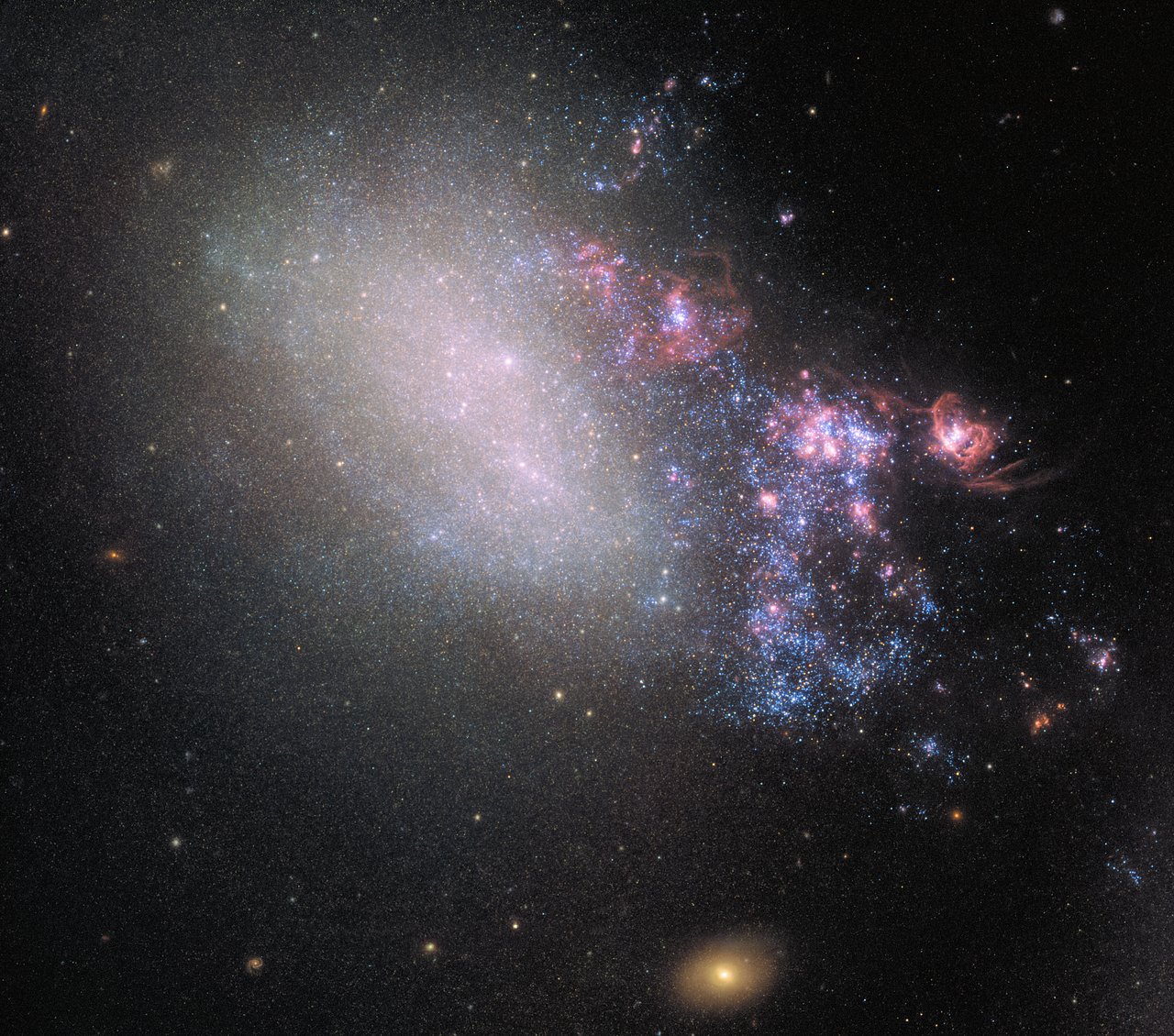Titanic Galactic Collision Left One Galaxy Twisted and Warped, Hubble Reveals
A new photograph from the Hubble Space Telescope shows the spectacular consequences when two galaxies collide.
The newly released image from Hubble shows the galaxy NGC 4485, which has been warped and twisted for millions of years by a much larger galaxy nearby. According to a statement from Hubble, the image reveals the complex shapes formed by gravity within that galaxy. The picture also shows the long streams of bright stars, gas and dust torn from NGC 4485 by the nearby galaxy NGC 4490, which is not shown.
Both galaxies are about 30 million light-years from Earth, located in the northern constellation Canes Venatici, the hunting dogs, near the Great Bear constellation, Ursa Major. Together, the two galaxies form a pair known as Arp 269.
Related: When Galaxies Collide: Photos of Great Galactic Crashes

The two galaxies are now moving away from each other, after making their closest approach — an encounter that left them connected by a vast stream of galactic material about 25,000 light-years long, according to the statement.
The stream consists of knots and pockets of gas and cosmic dust, along with bright, star-forming regions where young, massive, blue stars are being born.
Massive blue stars live fast and die young, ending their lives in dramatic explosions when they run out of nuclear fuel after a few million years. The debris from those explosions, in turn, reacts with heavier elements in the gas and dust of the cosmic environment and gives birth to new generations of stars.
Get the Space.com Newsletter
Breaking space news, the latest updates on rocket launches, skywatching events and more!
Hubble researchers said in the statement that the new photograph shows two distinct regions around the stricken galaxy; one, on the left side, is the remains of the galaxy's previous spiral structure, which was once evolving as a normal galaxy.
And the right side of the image shows how the stars, gas, dust and bright star-forming regions from NGC 4485 have been ripped away by the gravity of the larger galactic neighbor.
The image provides "further insights into the complex and mysterious field of galaxy evolution," researchers said in the statement.
The Hubble Space Telescope continues to produce spectacular photographs from the far reaches of space, although the observatory is already 29 years old and was expected to last for only 10.
This latest image is the second released by Hubble of this tortured galaxy; a photograph of NGC 4485 released in 2014 showed the galaxy in more-limited wavelengths of light, and with far less detail.
Two additional filters were used to make the latest photograph; they were attached to the Hubble's Wide Field Camera 3, the most technologically advanced instrument on the space telescope, which is jointly operated by NASA and the European Space Agency.
- What Happens When Galaxies Collide?
- Galaxies: Collisions, Types and How They're Made
- We Finally Know When Our Milky Way Will Crash into the Andromeda Galaxy
Follow us on Twitter @Spacedotcom and on Facebook.
Join our Space Forums to keep talking space on the latest missions, night sky and more! And if you have a news tip, correction or comment, let us know at: community@space.com.
Tom Metcalfe is a freelance journalist and regular Live Science contributor who is based in London in the United Kingdom. Tom writes mainly about science, space, archaeology, the Earth and the oceans. He has also written for the BBC, NBC News, National Geographic, Scientific American, Air & Space, and many others.









